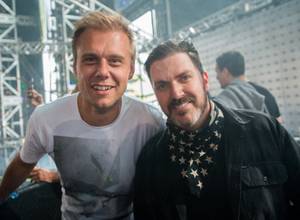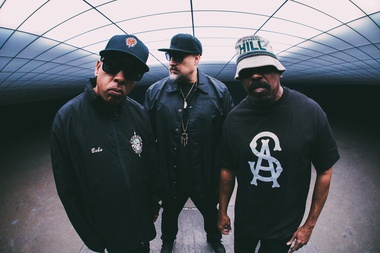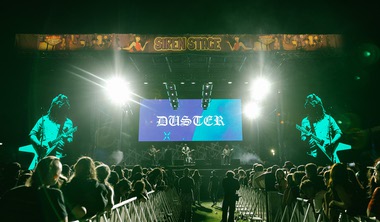So, in 2011 and 2012, your tour was billed as a retirement tour of sorts, right? Well, we tried to, it didn’t really stick (laughs).
What brought you back? It’s just one of those things, you don’t miss it until you ain’t got it. You put your guitar away, and you think, “Damn, I’m bored.” We never intended to stop completely anyway; it was meant to be a slowing-down process, but leave it to us to be back into a full-blown world tour two years later.
What type of setlist can fans expect on this tour? A mixture of old and new, as always. I can’t remember the setlist … you would think I’d have learned it by now (laughs), but we’re doing four from [July album] Redeemer of Souls plus a couple of old songs we haven’t played in a while. Of course all the crowd favorites are there, “Living After Midnight,” “Breaking the Law” and the rest. We think we’ve got a great set.
Redeemer of Souls has been getting some really good reviews, and original metal icons like Iron Maiden and Black Sabbath, who are also still putting out really well-received music. Why do you think that sort of throwback metal has such lasting power? What would you have to replace it with? (laughs) If you take it away there’s just a void, there would be nothing there. We used to think to ourselves, surely, we’ll be done soon, but we have to keep current, keep improving with each album and each tour. We try to play new cities or learn new recording techniques and try to get a better live performance. And I think it’s a trait of heavy metal in general. I mean, think all of the famous bands like ourselves, Maiden, Sabbath, [Deep] Purple—we’ll try everything from songs that will make you money to songs that will scare you half to death and everything in between.
In the ’90s, there were lots of people dissecting metal into all of its component parts—speed metal, goth metal, grunge metal—but there was still all of us in the old guard, going strong.
Do you like any newer metal bands? I don’t get a great deal of chance to listen to them, to be honest. We barely have enough time to listen to what we’re doing. Some of the stuff that I listen to is all the old stuff, stuff from 30-40 years ago. I still love all the rockers and the blues from back then.
You’re touring with Steel Panther, which toes the line between parody act and genuine metal band. Do you think metal fans can appreciate both the pure metal of a Judas Priest and the more ridiculous extremes that Steel Panther accentuates? In the ’80s, that’s pretty much how it was (laughs). I mean, at the end of the day, they’re remarkably good musicians, and that’s the thing that matters. They’re a good band, great players and it’s a really great stage act, they’re exciting. So there’s nothing to complain about. Some people whine and say, “I think you guys should be angry,” but who cares about that?
Judas Priest was definitely known for pushing social boundaries, bringing S&M culture into the mainstream. Do you feel like you still push boundaries, or has metal radicalized beyond you? Image-wise [frontman] Rob [Halford] still does a lot of costume changes and things like that, but a lot of the other things have toned down to a certain degree. But in our music, yeah, we’re still pushing boundaries—with every album and with every tour we like to make it more exciting and bigger. I think that’s what keeps you going, keeps you young. Some bands will get a formula and then they’ll stick to it, and people love them for it, but we’ve never done that. We’ve always tried to evolve our sound and creatively try something different.
Judas Priest November 14, 8 p.m., $69-$169. The Pearl, 702-942-7777.





